Understanding fractions Normal Geometry Worksheets for Ages 3-9
6 filtered results
-
From - To
Introduce your young learner to the world of fractions with our "Understanding Fractions - Normal Geometry Worksheets" for ages 3-9. Our printable worksheets simplify complex concepts into fun, engaging activities that make learning both accessible and enjoyable. Each worksheet is designed to systematically build foundational geometry and fraction skills, allowing children to grasp these essential math principles at their own pace. With vibrant illustrations and age-appropriate challenges, young students will develop a solid understanding of fractions, paving their way toward future math success. Equip your child with the tools they need to excel in math with our expertly crafted resources!
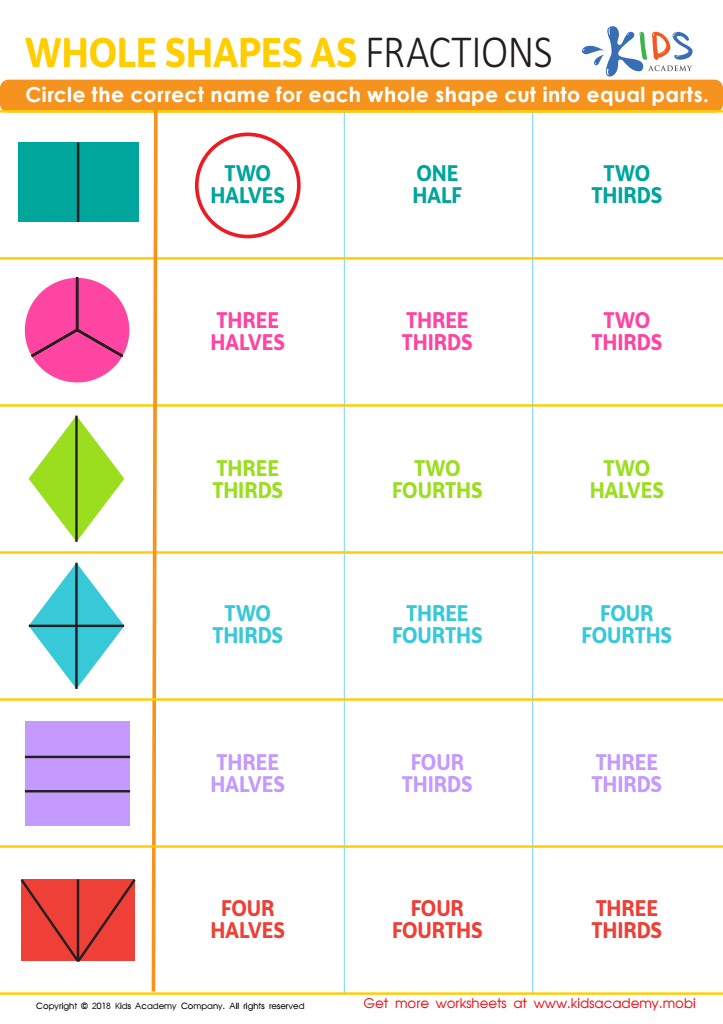

Whole Shapes as Fractions Worksheet
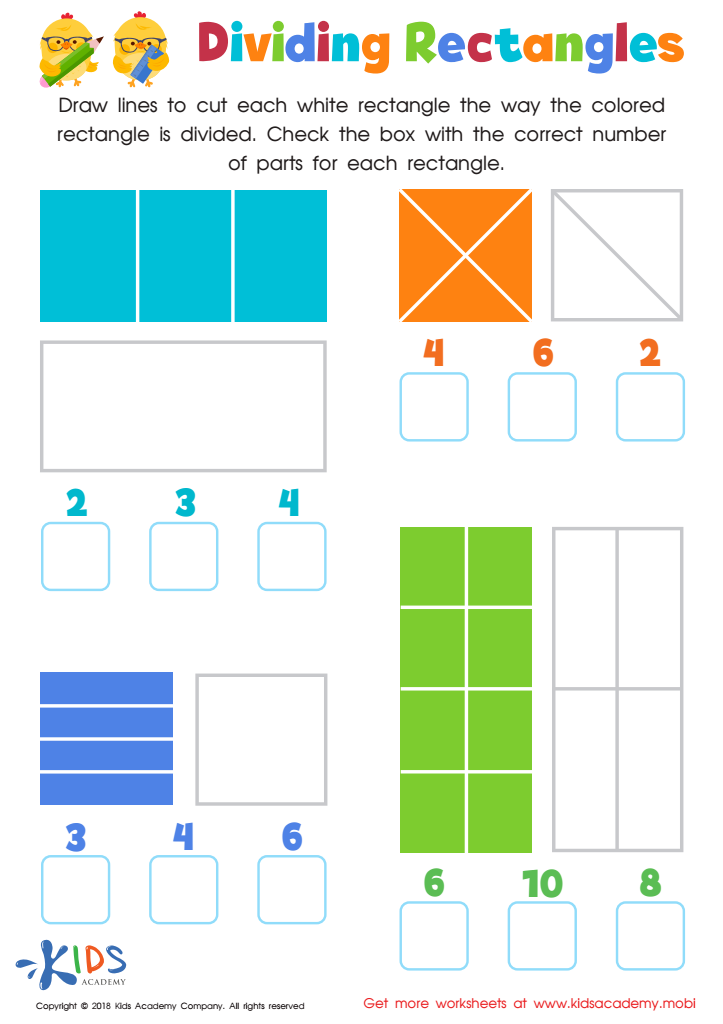

Dividing Rectangles Worksheet
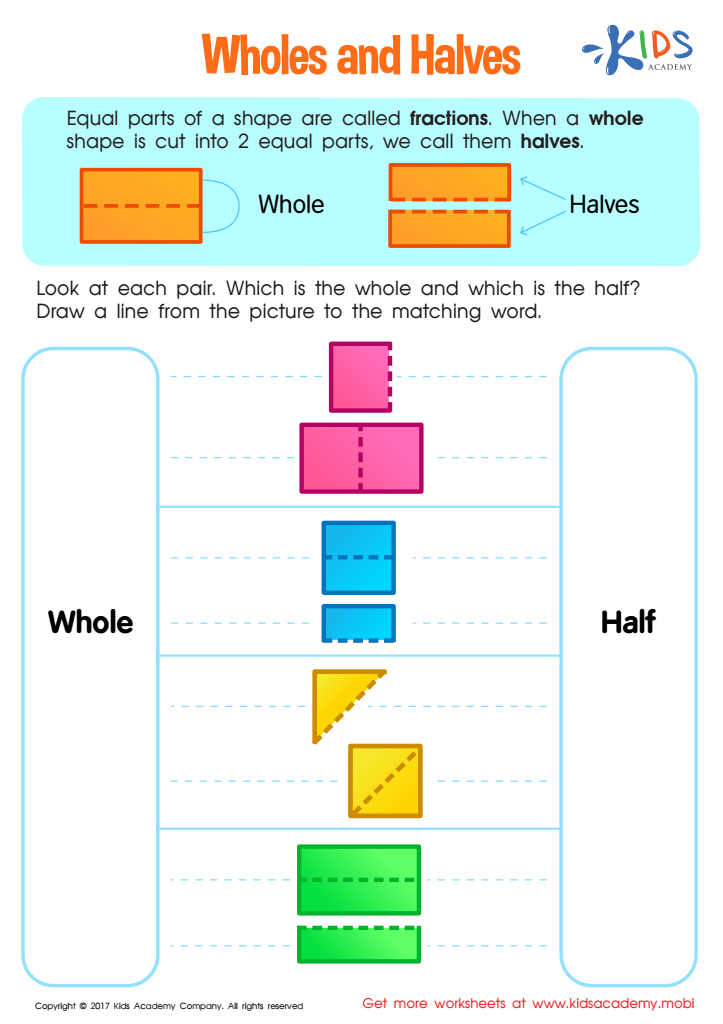

Wholes and Halves Worksheet
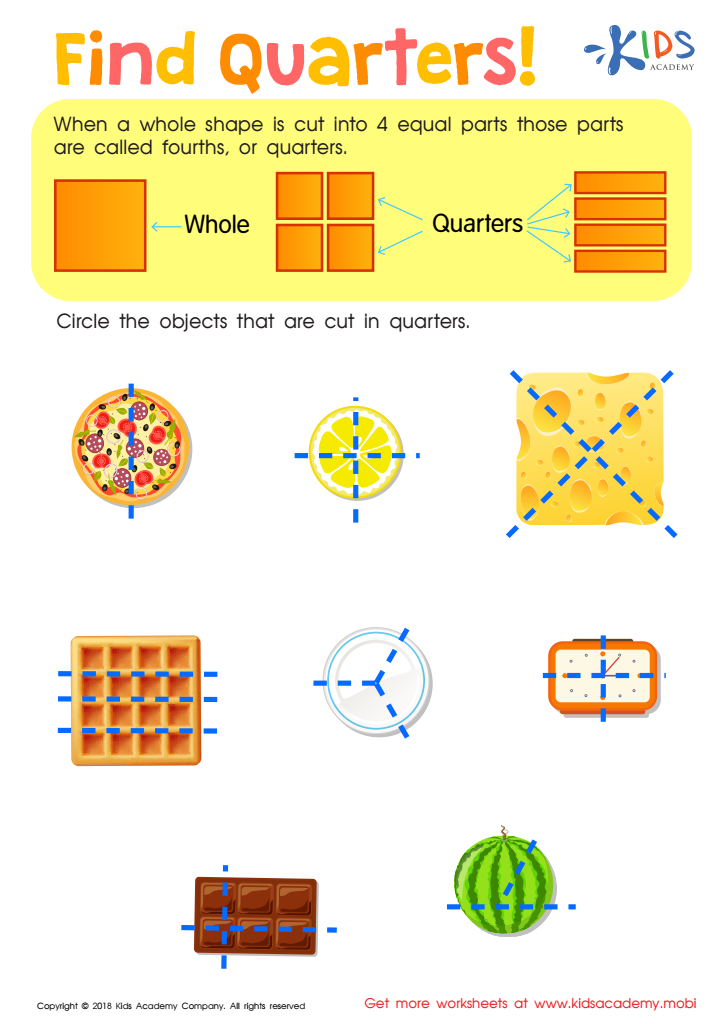

Find Quarters Worksheet
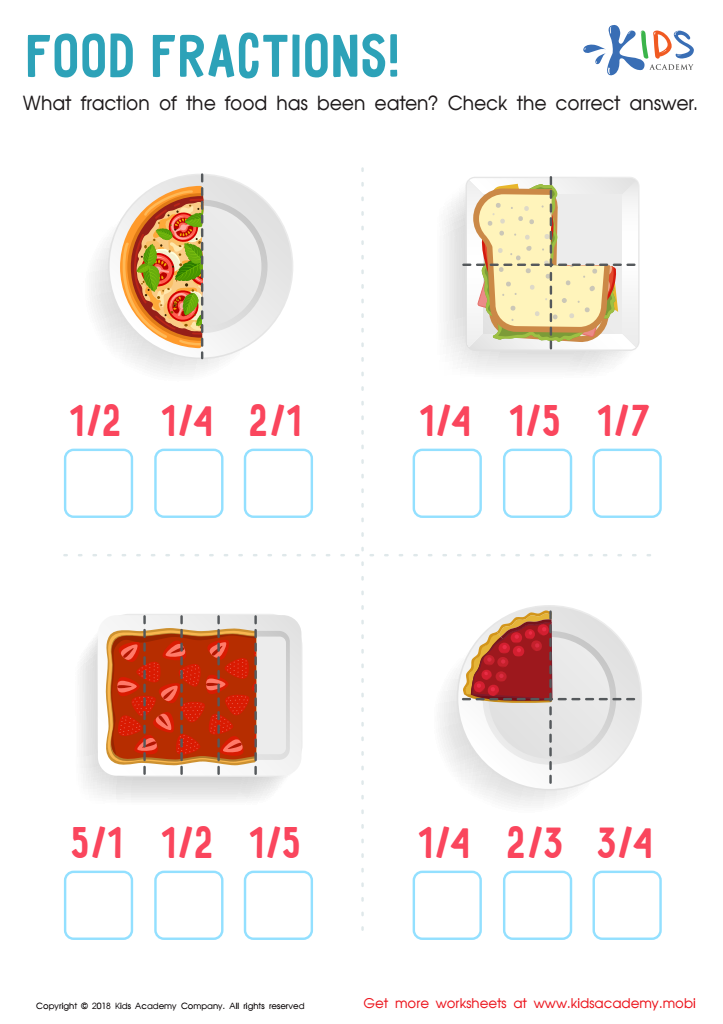

Food Fractions Worksheet
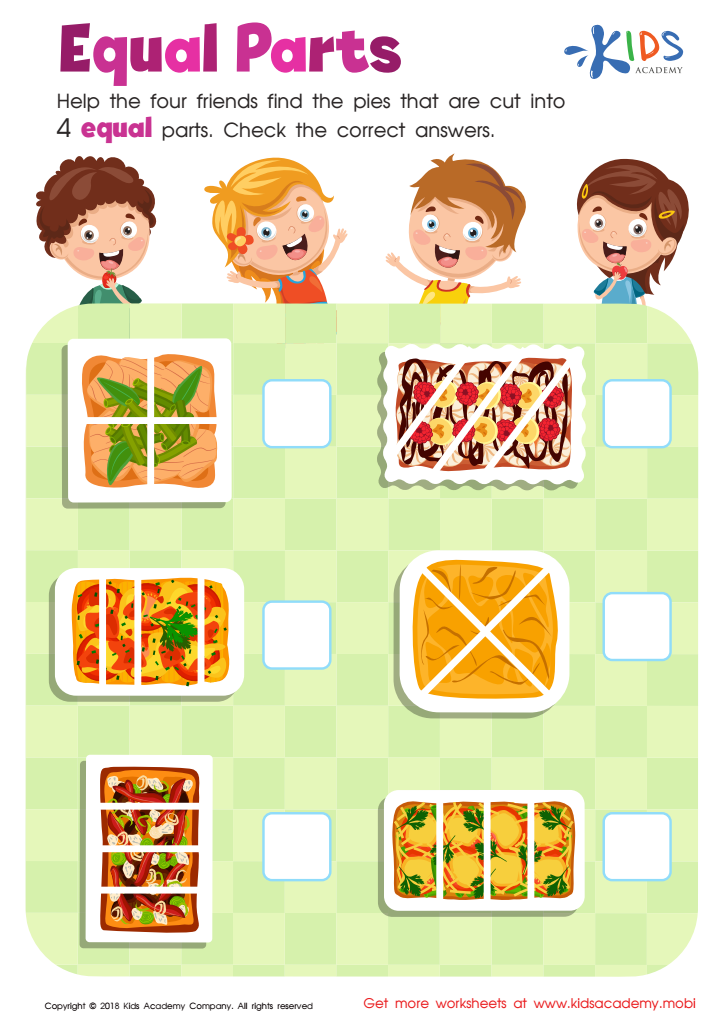

Equal Parts: Food Worksheet
Understanding fractions and basic geometry is crucial for children aged 3-9 because these foundational math skills foster cognitive development, problem-solving abilities, and numeracy, which are essential for academic success and everyday life.
At young ages, children's brains are highly adaptable and primed for learning complex concepts through play and exploration. Introducing fractions through activities like sharing food or dividing objects helps them grasp the idea of parts of a whole, proportional thinking, and fair sharing. These concepts, in turn, teach children about equality and can be naturally integrated into daily routines.
In addition to fractions, basic geometry is just as fundamental. Concepts like shapes, sizes, and spatial awareness help children better navigate the world around them. Geometry lessons often involve identifying, sorting, and comparing shapes, which enhances their abilities to categorize and recognize patterns. These skills are not only vital in mathematics but also support literacy and other learning areas since pattern recognition is crucial for decoding words and understanding sentence structures.
By engaging children with these math concepts early, parents and teachers set a solid foundation for higher-level math and science curricula. They also nurture critical thinking, analytical skills, and a positive attitude towards learning. Therefore, understanding fractions and basic geometry at an early age equips children with essential tools for future educational and personal success.
 Assign to My Students
Assign to My Students















